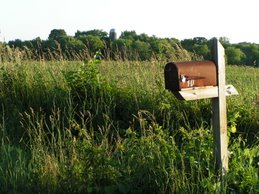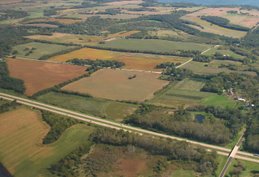Phil Lewis, "retired" Professor Emeritus of Landscape Architecture, shares with us a revised version of the comments he recently submitted regarding Ruekert-Mielke's proposed "Northeast Neighborhood" Plan. [Emphasis and clarification in brackets are mine.] -- Terry
To Ruekert-Mielke and Fitchburg's Planning Commission:
The option to integrate the two plans (on the rail corridor) of Kelly and Wall appears to be taking shape. Truly high-density economically viable development at this location should be considered. A design providing opportunities for such high-density development, starting with a foundation framework than over time can be added to as demand for more facilities increases, is required. Such a design could also assure that future development would occur over first-phase surface parking lots. Ideally, such a design would look to underground parking now and in the future.
Based on information presently available to me, development of the Sveum property [in the Northeast Neighborhood] should be postponed until the necessary transit-oriented density on the rail corridor is achieved. This requires a major effort by all to improve and utilize the rail corridor for transit. Consideration should be given to moderate-density adjacent to high-density development and organic food production opportunities should be pursued (see Sveum property) along with E-Way expansion at this time. I have presented such ideas publicly on a number of occasions.
I have also noted that a large percentage of the people in Dane County live within one mile of a rail corridor and Fitchburg has a grand opportunity to put into practice the kind of development that supports mass transit and higher liveable densities, that provides greater amenities for daily living, local food production, preservation of natural and cultural resources, and avoids mindless sprawl.
Since a high percentage of Dane County people live within a corridor, one mile either side of a rail line, and since this percentage uses electricity, doesn’t it seem reasonable to locate proposed new [ATC] transmission lines within this rail corridor, placed within or attached to higher density structures, or beneath them, as is possible in Fitchburg? As part of urban structures (easily accessible for repair, less susceptible to weather and other damage, grounded to eliminate stray voltage problems, and well insulated for protection of their surroundings), electricity for magnetic induction motor propelled personal rapid transit or other applications with minimal line losses would be available. Towers that unnecessarily disrupt our magnificent landscape would not be needed.
Philip H. Lewis, Jr.
Monday, September 3, 2007
Fitchburg's Grand Opportunity
Posted by
Terry Carpenter
at
4:30 PM
![]()
Categories ATC, NE Neighborhood Plan, NEN, Phil Lewis, Ruekert-Mielke



No comments:
Post a Comment